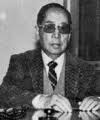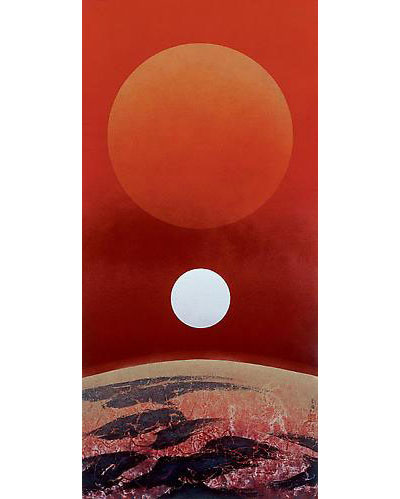(49)
《荒涼山莊》狄更斯鬼魅小說集 Dickens in Taiwan 2009
(48)
威廉愛德華茲戴明,擦洗地板大學的全面質量管理大師
其中的一個負責業務的成功戰後日本和有眼光的高質量的產品 ...
由路易斯Miravitlles約韋爾
“這些年來嚴峻 ...”於是開始一個最重要的自傳體作品威廉愛德華茲戴明。在它指的是他艱難的過渡從懷俄明大學,他畢業電氣工程於 1921年。
這個男孩,出生於 1900年10月在一個簡陋的家中蘇城(愛荷華州),17歲了她所有的錢,走了幾英里從火車站到懷俄明大學。從那時起,至今還記得年輕的戴明清掃及拖地的正殿。
這些消息來源是非常重要的挑戰,他非常成功的職業生涯。從那裡開始他的三個最重要的素質,謙遜,緊縮開支和服務的意願。
1925年,戴明收到他的主人來自科羅拉多州的數學和博士學位,1928年在耶魯大學物理系。不久之後,他開始工作在農業部的美國,在那裡他種植的知識基礎,他被稱為:統計和非凡的嚴肅性和一致性的所有要求。
當年,陳德銘會見了沃爾特休哈特,一個知名成員的技術人員的貝爾電話,誰建議他運用自己的知識管理。 1939年,戴明合作始於美國人口普查辦公室,後來,開始任教於斯坦福大學。
在這些教室,戴明發現,大多數的美國人誰湧到他的課,不重視對應用程序的統計質量改進和管理。因此,結論是,戴明質量可大大改善只有“高層管理人員”參與了解決方案。
失望的影響有限,他的理論在美國企業在1947年加入了團隊領導的道格拉斯麥克阿瑟將軍,負責促進日本的重建。它在那裡,他出示了爆炸。被破壞的日本經濟是完美的滋生地為他們的發展的經營理念。
根據主持JUSE(日本聯盟的科學家和工程師),他的理論的傳播戴明的全面質量管理和高層管理人員最大的公司在該國。
他的經驗開始在日本出版。但在當時,戴明拒絕收取專利使用費的出版物。因此,以表彰他的工作和他的慷慨,1950年12月,成立了國際公認的JUSE戴明獎表彰的優秀質量管理。
1960年,日本首相岸信介,代表裕仁天皇授予戴明博士在日本瑞寶命令中承認他的貢獻,日本產業再生。
成功的日本公司在世界上引起了關注高級管理人員對美國的戴明理論。回到美國,在1980年,戴明出演了NBC的節目播出,題目是“日本能...為什麼我們不能?”因此,其服務的需求大幅增長。
1982年,麻省理工學院出版了一本書,綜合他的戴明的管理理論在其著名的“14點”,以提高質量和“七病”,防止它(後來在1986年重新發行)。
據戴明,引導公司走向全面質量管理,文化變革是必要的,這是唯一可能的長期承諾的高層管理人員。在本質上,反映自己的生活,也許是為什麼那麼其對業務一直如此重要,深刻而持久的。
在其職業生涯,陳德銘接到幾十個學術獎。其中有博士強調的各種榮譽和獎金,他整個職業生涯獲得由國家科學院,美國於 1988年。
1993年,戴明博士出版了他的最新著作,其中還推出了其著名的“管理系統基礎上的深刻認識。”在同年12月去世,在他的家在華盛頓包圍他的家人。
Por Luis Miravitlles Jover
 "Aquellos años austeros…" Así comenzaba una de las más significativas piezas autobiográficas de William Edwards Deming. En ella, hacía referencia a su difícil paso por la Universidad de Wyoming, donde se graduó en Ingeniería Eléctrica en 1921.
"Aquellos años austeros…" Así comenzaba una de las más significativas piezas autobiográficas de William Edwards Deming. En ella, hacía referencia a su difícil paso por la Universidad de Wyoming, donde se graduó en Ingeniería Eléctrica en 1921.Este muchacho, nacido en octubre de 1900 en un humilde hogar de Sioux City (Iowa), a los 17 años tomó todos sus ahorros y caminó unas cuantas millas desde la estación de ferrocarril hasta la Universidad de Wyoming. De aquella época, todavía se recuerda al joven Deming barriendo y fregando el suelo del hall principal.
Aquellos difíciles orígenes fueron determinantes en su exitosísima carrera profesional. De ahí provienen tres de sus cualidades más importantes, la humildad, la austeridad y la voluntad de servicio.
En 1925, Deming obtuvo un master en Matemáticas en Colorado y en 1928, un doctorado en Física en Yale. Poco después, entró a trabajar en el departamento de Agricultura de los Estados Unidos, donde cultivó la base de los conocimientos por los que se hizo conocido: la estadística y un extraordinario rigor y constancia en todos sus planteos.
En aquellos años, Deming conoció a Walter Shewhart, reputado miembro del staff técnico de la telefónica Bell, quien le sugirió que aplicara sus conocimientos al management. En 1939, Deming empezó a trabajar en la oficina norteamericana del Censo y, tiempo después, comenzó su actividad docente en Stanford.
En aquellas aulas, Deming comprobó que la mayor parte de los directivos estadounidenses que acudían a sus clases, no daban importancia a la aplicación de la estadística en la mejora de la calidad y de la gestión. Así, Deming concluyó que la calidad solo podía ser mejorada sustancialmente si el "top management" se involucraba en la solución.
Decepcionado por la escasa repercusión de sus teorías entre los empresarios norteamericanos, en 1947 se unió al equipo dirigido por el General Douglas Mac Arthur, encargado de promover la reconstrucción del Japón. Y fue allí donde se produjo su gran eclosión. La devastada economía nipona fue el perfecto caldo de cultivo para el desarrollo de su filosofía empresarial.
Bajo los auspicios de la JUSE (Japanese Union of Scientists and Engineers), Deming difundió sus teorías sobre la calidad total y el management a la alta dirección de las compañías más importantes del país.
Sus lecciones empezaron a publicarse en todo Japón. Pero en aquel momento, Deming se negó a cobrar royalties por sus publicaciones. Así, en reconocimiento a su trabajo y a su generosidad, en diciembre de 1950, la JUSE instituyó el internacionalmente reconocido Premio Deming que galardona la excelencia en la gestión de la calidad.
En 1960, el Primer Ministro japonés, Nobusuke Kishi, en nombre del Emperador Hirohito, concedió al Dr. Deming la Orden Japonesa del Sagrado Tesoro, en reconocimiento a su contribución al renacimiento de la industria japonesa.
El éxito de las empresas japonesas en el mundo atrajo las miradas de la alta dirección americana hacia las teorías de Deming. De vuelta a los Estados Unidos, en 1980, Deming protagonizó un programa emitido por la NBC con el título de "Si Japón puede… ¿Por qué no podemos nosotros?" Así, la demanda de sus servicios creció espectacularmente.
En 1982, el MIT publicó un libro donde Deming sintetizaba su teoría de gestión basada en sus famosos "14 puntos" para impulsar la calidad y en las "siete enfermedades" que lo impiden (reeditado posteriormente en 1986).
Según Deming, para orientar a una empresa hacia la calidad total, es necesario un cambio cultural, que sólo es posible con el compromiso a largo plazo de los directivos de primer nivel. En el fondo, un fiel reflejo de su propia vida y, probablemente, es por ello por lo que su impacto en el mundo empresarial ha sido tan importante, profundo y duradero.
En el transcurso de su carrera, Deming recibió docenas de reconocimientos académicos. Entre ellos, se destacan diversos doctorados "honoris causa" y el premio a toda su carrera otorgado por la Academia Nacional de las Ciencias Americanas en 1988.
En 1993, Dr. Deming publicó su último libro, en el que introdujo su también famoso "sistema de gestión basado en los conocimientos profundos". En diciembre de ese mismo año, murió en su casa de Washington rodeado de su familia.
(47)
8o年代 戴明博士經常說起 :"我點燃過許多處的火苗 可它們都熄滅了" (Dr. Deming often said, "I lit many fires, but they all went out.")
(46)
經濟新潮社即將搬家,自2009年11月30日(星期一)起,
新地址:104台北市中山區民生東路二段141號5樓
New Address: 5F, No. 141, Sec.2, Minsheng E. Rd., Taipei City 104, Taiwan
New Tel:( 02 )2500-7696 ext 2765.
New Fax:(02) 2500-1955(45)
Hacquebord等之背書 我掃瞄ㄧ下 似乎可以做為入門讀本
---
(44)
Dear HC,,
豐田方式與本田兵法
書已收到 且容我看個幾天再寄給你
(43)
Formosa Groug knew it.
立法院決議要求經濟部應立即停止推動「DRAM 產業再造計畫」,經濟部長施顏祥率工業局長杜紫軍今 (23) 日到立院專案報告 DRAM 產業再造,希望尋求翻案。不過,成效仍不理想,多位立委在質詢時都不願支持翻案,並表示立院已決議,經濟部硬闖是不智之舉。
立法院經濟委員會今天審查國營事業漢翔 99 年度營業預算,但政府公布 DRAM 產業再造方案,立院決議,要求經濟部應立即停止推動「DRAM 產業再造計畫」,並停止國發基金對台灣創新記憶體公司 (TIMC) 的資金挹注。為此,經濟部長施顏祥率工業局長杜紫軍今天到立院專案報告 DRAM 產業再造,希望尋求立委的支持,並讓「DRAM 產業再造計畫」「應即停止推動」決議有「翻案」的機會。經濟部長施顏祥在報告中指出,透過 TIMC 與爾必達 (Elpida) 的策略聯盟,取得爾必達 9.5% 的股權,建立策略聯盟,再透過技術入股的策略聯盟方式,TIMC 可取得爾必達的 IP 與產品使用權,無需支付權利金或技術移轉金。
報告進一步指出,透過入股得策略聯盟,可取得爾必達的 DRAM 智財權、製程技術、產品設計及產品的使用授權,並藉此 TIMC 可快速拉近與國際母廠間的技術差距,並研發自有先進技術,有助台灣 DRAM 產業技術扎根。不過,多位藍綠立委在質詢時都明白表示,不願支持「DRAM 產業再造計畫」翻案,還指出,施顏祥一定是受了高層壓力才會來立院尋求翻案。但施顏祥不願回應只表示,一定會跟委員溝通,讓計畫通過。
(42)
David Hsu 說:
"這裡抄錄一段Deming對CPK的批評
This simple illustration should put to rest forever use of measures of dispersion like Cpk, as it has no meaning in terms of loss. Moreover, it can be decreased to any value merely by widening the specifications.
不過他是強調吾人應持續改善 使結果持續接近中心值(或目標值)
不應以改善CPK為滿足
因為你只要放寬規格就可以改善CPK了
所以要如何持續改善呢?....."
(41)

中美關係與國際法/杜蘅之著.--二版.--台灣商務.--民71[1982] .
中美實質外交與其他國際法問題, 578.252/8476, 杜蘅之, 商務
遊美小品/杜蘅之著 .--再版 .--臺北市:大林, 1981[民70]
美國與美國人/杜蘅之撰 .--臺北市:大林, 1980[民69]
(40)

Liu Kuo-sung (b. 1932)
Sun/Moon Symmetry, 2008
Ink and colour on paper
62 x 29 1/2 inches (158 x 75 cm)
‘Beyond China’ is an ambitious exhibition of ten contemporary artists from Taiwan, all of whom represent the best of the New Ink Painting—the contemporary expression of the classical brush and ink style developed over the centuries. This exhibition highlights some of the most significant work being done by the most distinguished practitioners of the New Ink Painting beyond the Chinese mainland.
The works of these artists range from the neo-classical to the avant-garde and from those who have long been internationally established (Liu Kuo-sung, Tong Yangtze, Yuan Jai, Lo Ch’ing, Yu Peng, and Ho Huai-shuo) to the emerging younger generation of brilliant exponants (Fay Ku, Pan Hsin-hua, Yao Jui-Chung, and Chun-yi Lee). Each with their own distinct style, these artists represent different trends in the development of contemporary Chinese ink painting.
Ink painting, as expressed in calligraphy and monumental landscape painting, is the foundation stone of Chinese culture. While this tradition was interrupted in Mainland China because of the Cultural Revolution, Taiwan has benefited from an unbroken link with China’s cultural past.
In the past three decades, Taiwan has experienced enormous technological and economic development, which has in turn prompted its artists to search for ways to convert their culture’s traditional aesthetic into work that is relevant to the contemporary world. While all of these artists have benefited from a rigorous foundation in the brush and ink tradition, they have evolved in different adventurous ways to express the reality of modern Asia with a new pictorial language.
Opening Reception Friday, 30 October 2009, 6 – 8 PM
Michael Goedhuis, London
16 Bloomfield Terrace
London SW1W 8PG
Phone: +44 (0) 20 7823 1395
Web: www.michaelgoedhuis.com
「中國之外:來自台灣的新水墨畫」結集了劉國松、何懷碩、于彭、羅青、袁旃、李君毅、潘信華、董陽孜、姚瑞中、顧詠德、李真等具國際知名 度或獨樹一幟的台灣藝術家。這項從優雅新古典到風格前衛的水墨創作展,反應了台灣過去三十年在中國傳統水墨技巧和現代藝術創作間的巧思與創意。
展覽策展人古德赫斯(Michael Goedhuis)表示,書法和水墨山水是中國文化的基礎。相較於受到文化大革命干擾的中國,台灣在這一方面比中國大陸幸運。
從紐約大都會博物館、波士頓現代美術館,以及其他相關機構均準備於未來兩年內,陸續推出大型中國現代水墨展的趨勢觀察,古德赫斯預言,「現代水墨作品將是下一波國際藝術市場的新潮流。」
沒有留言:
張貼留言